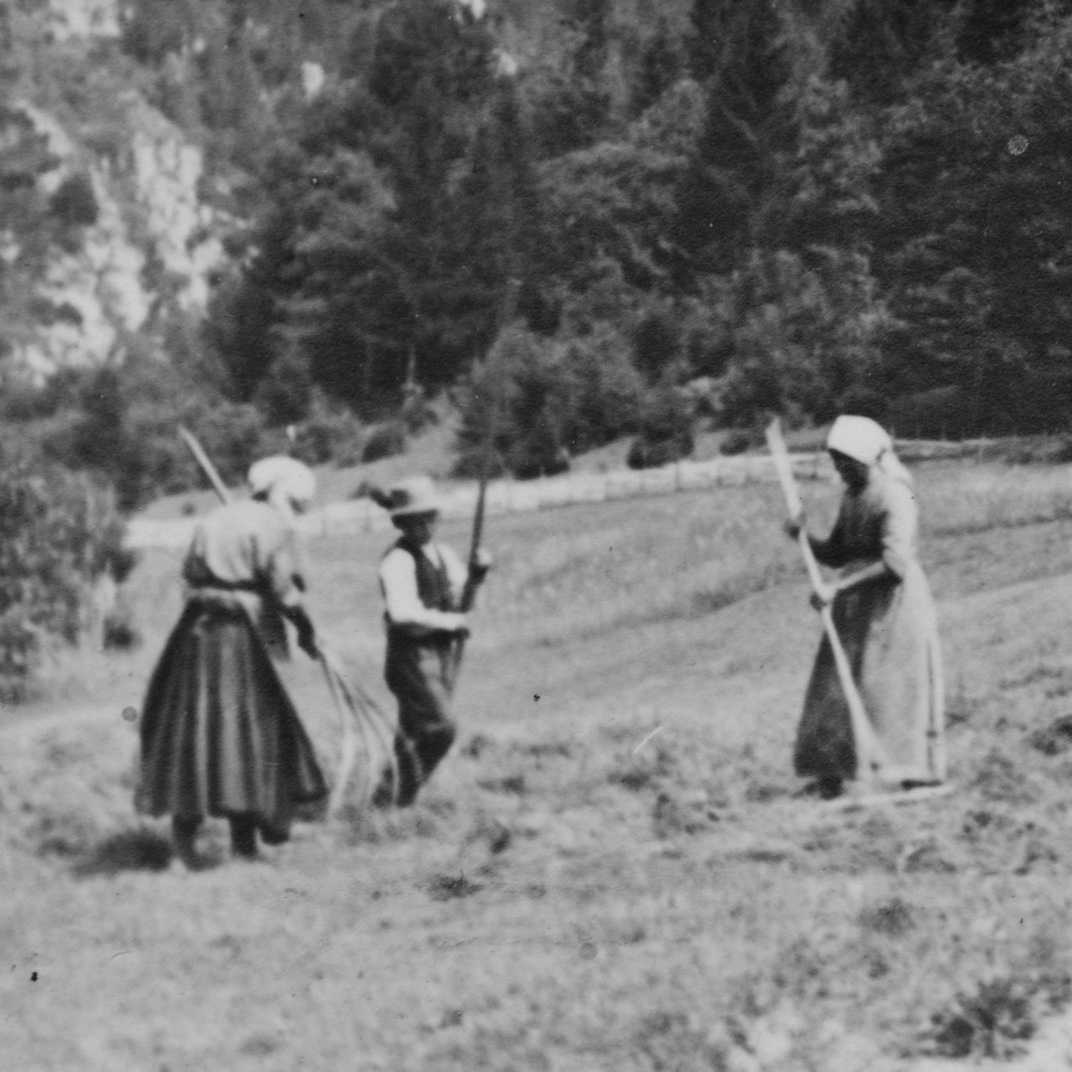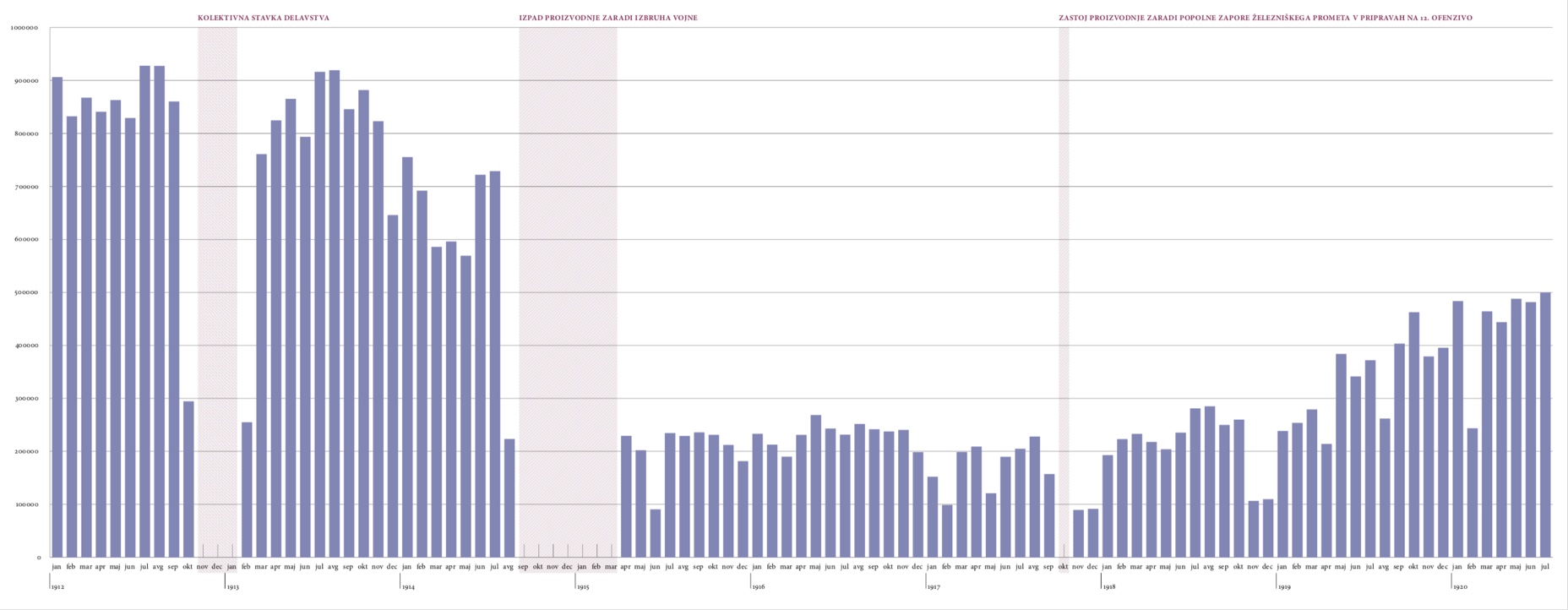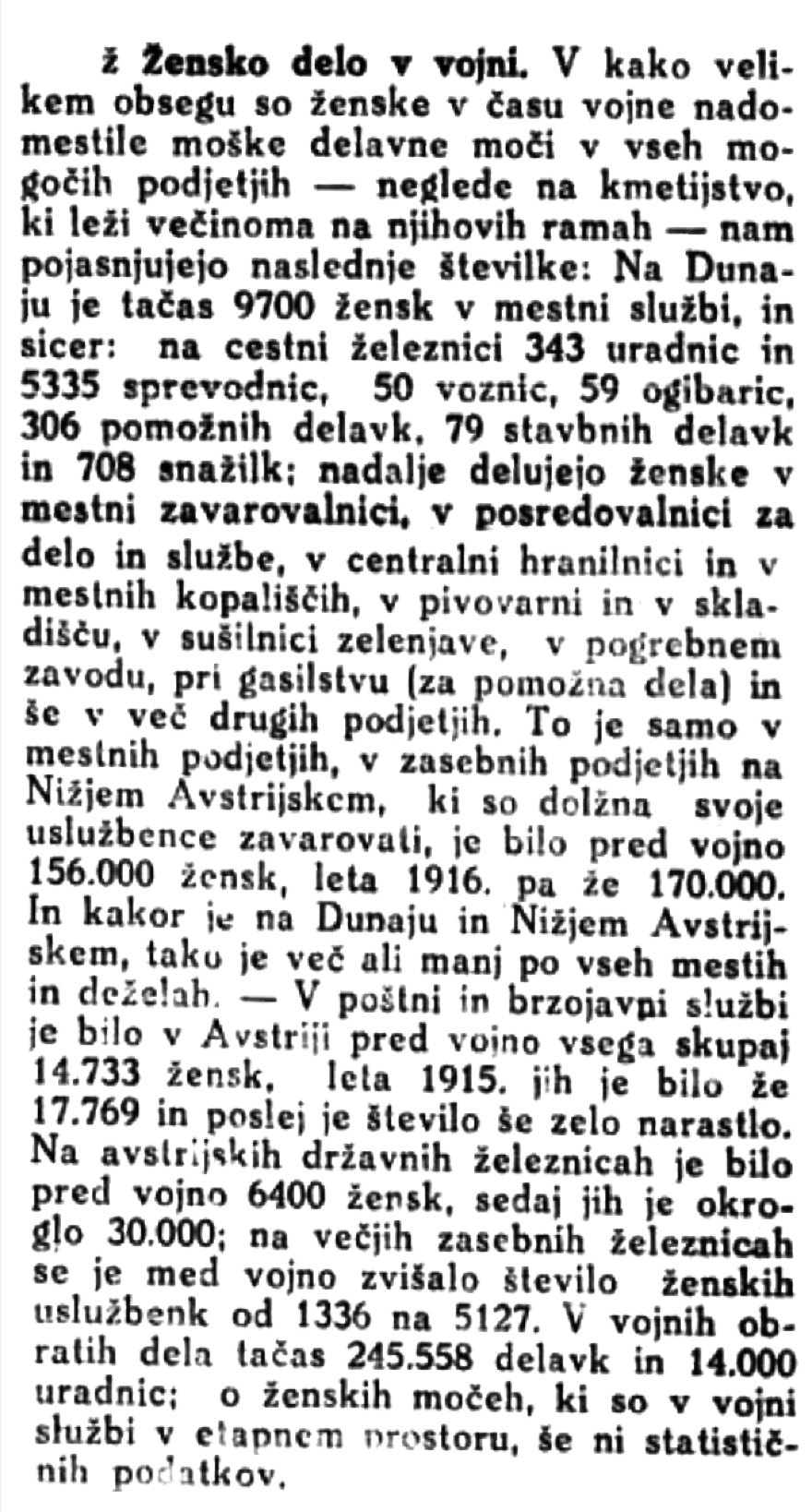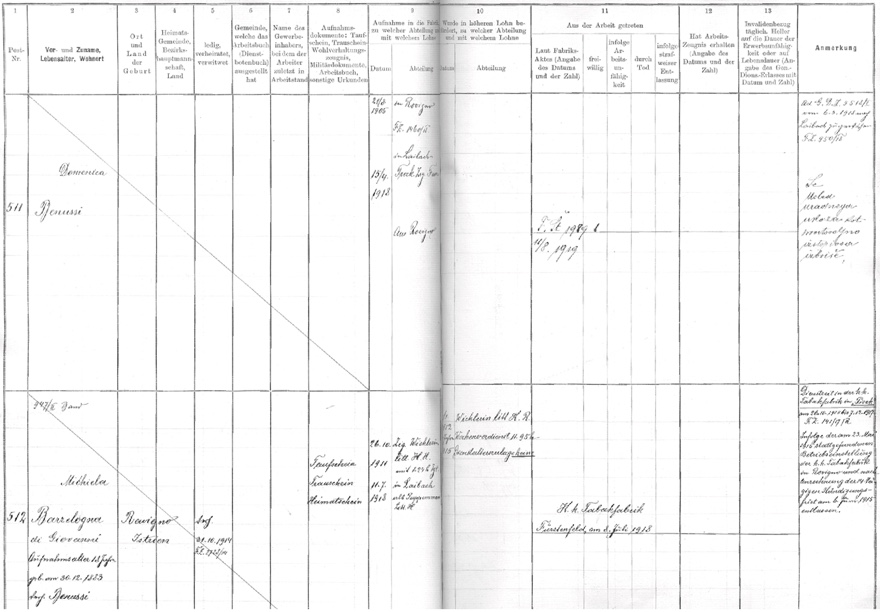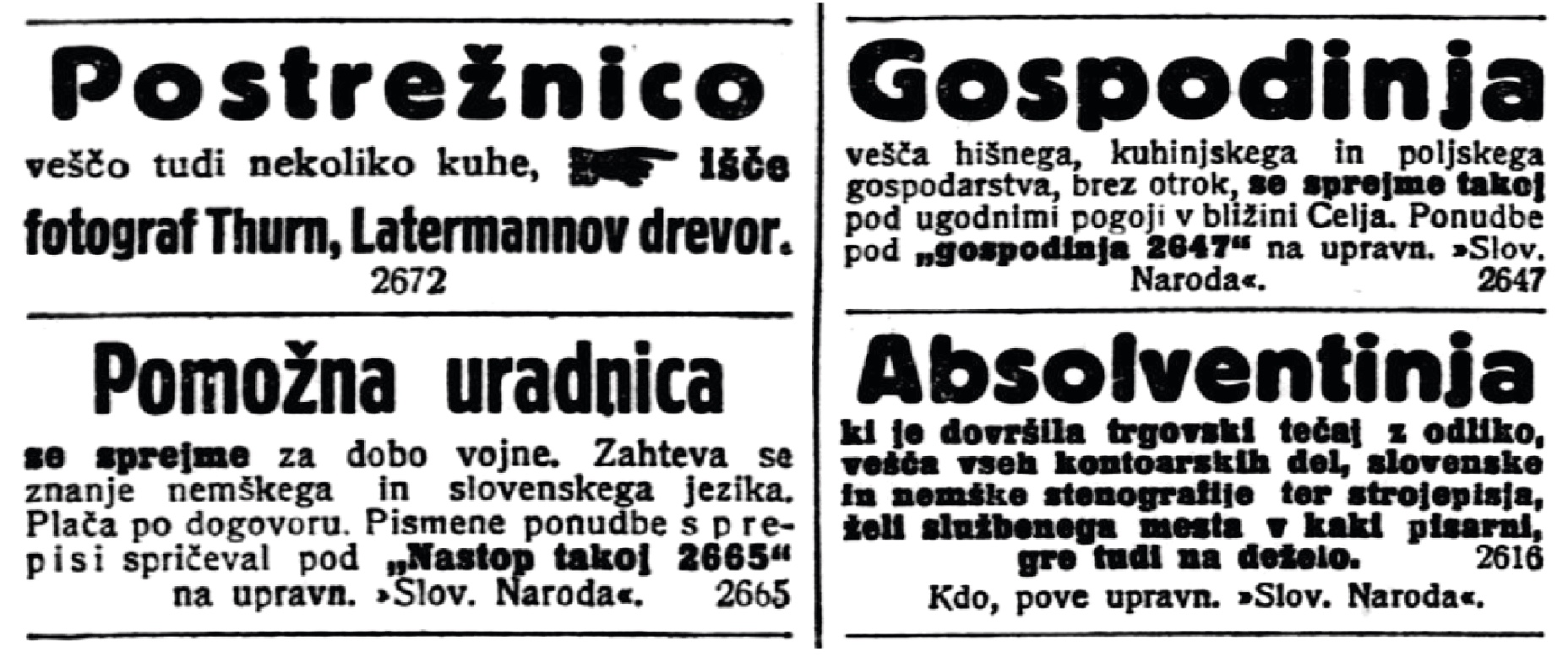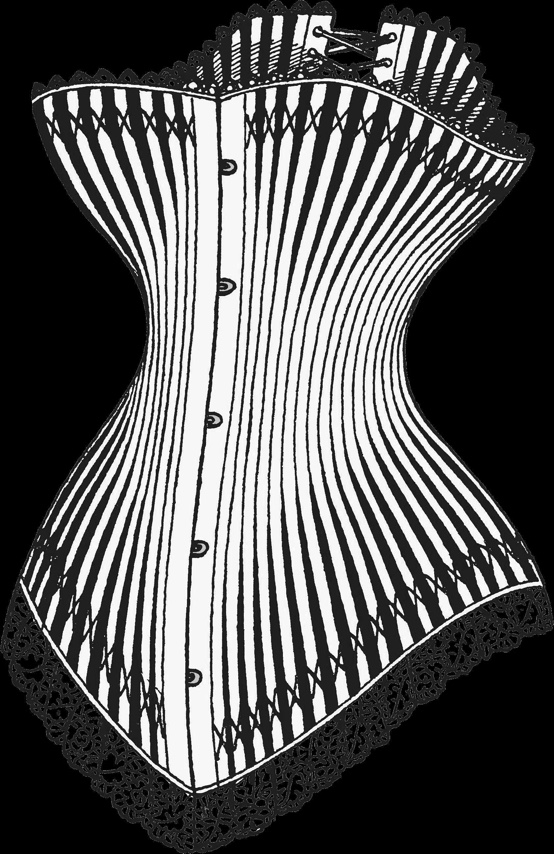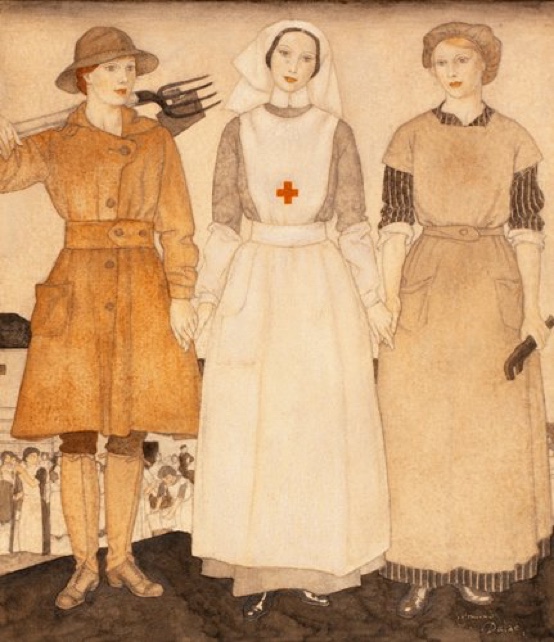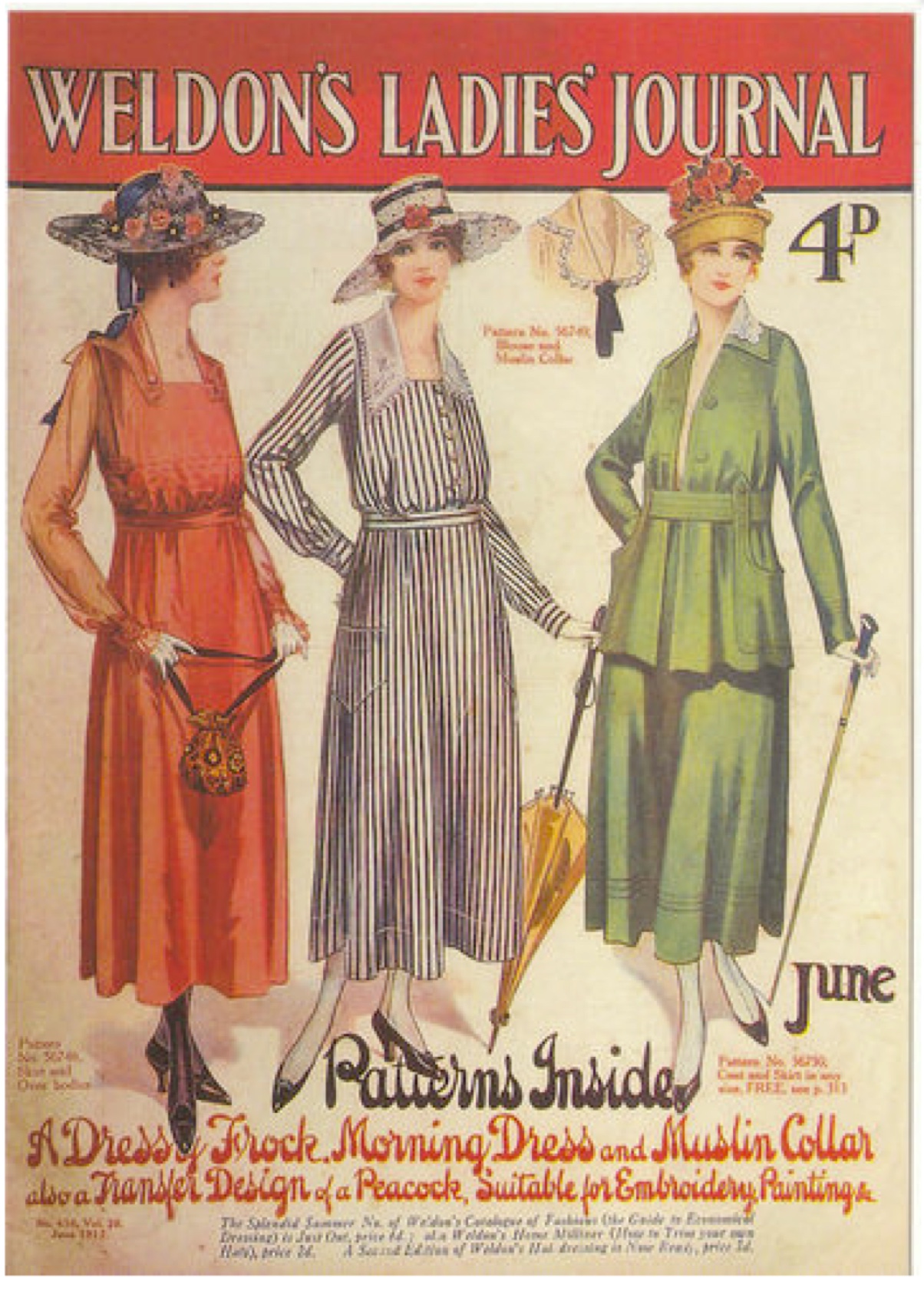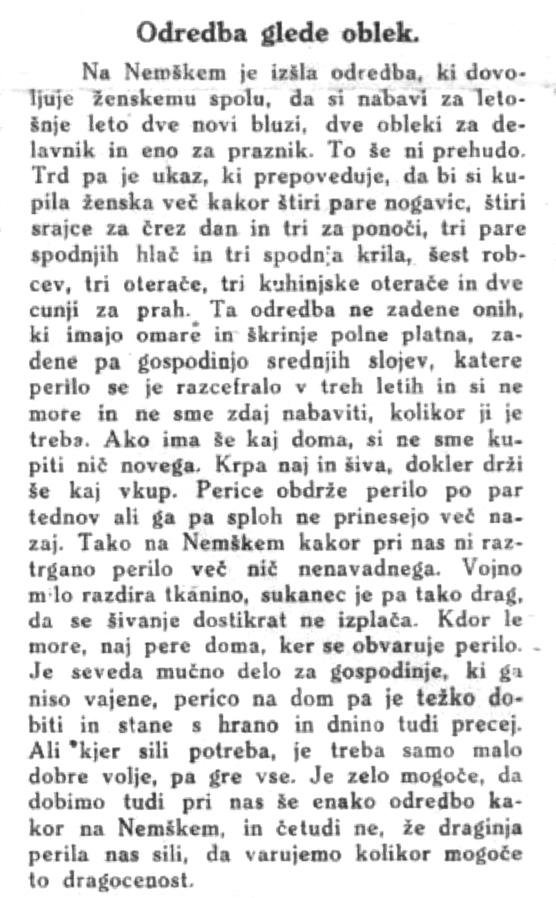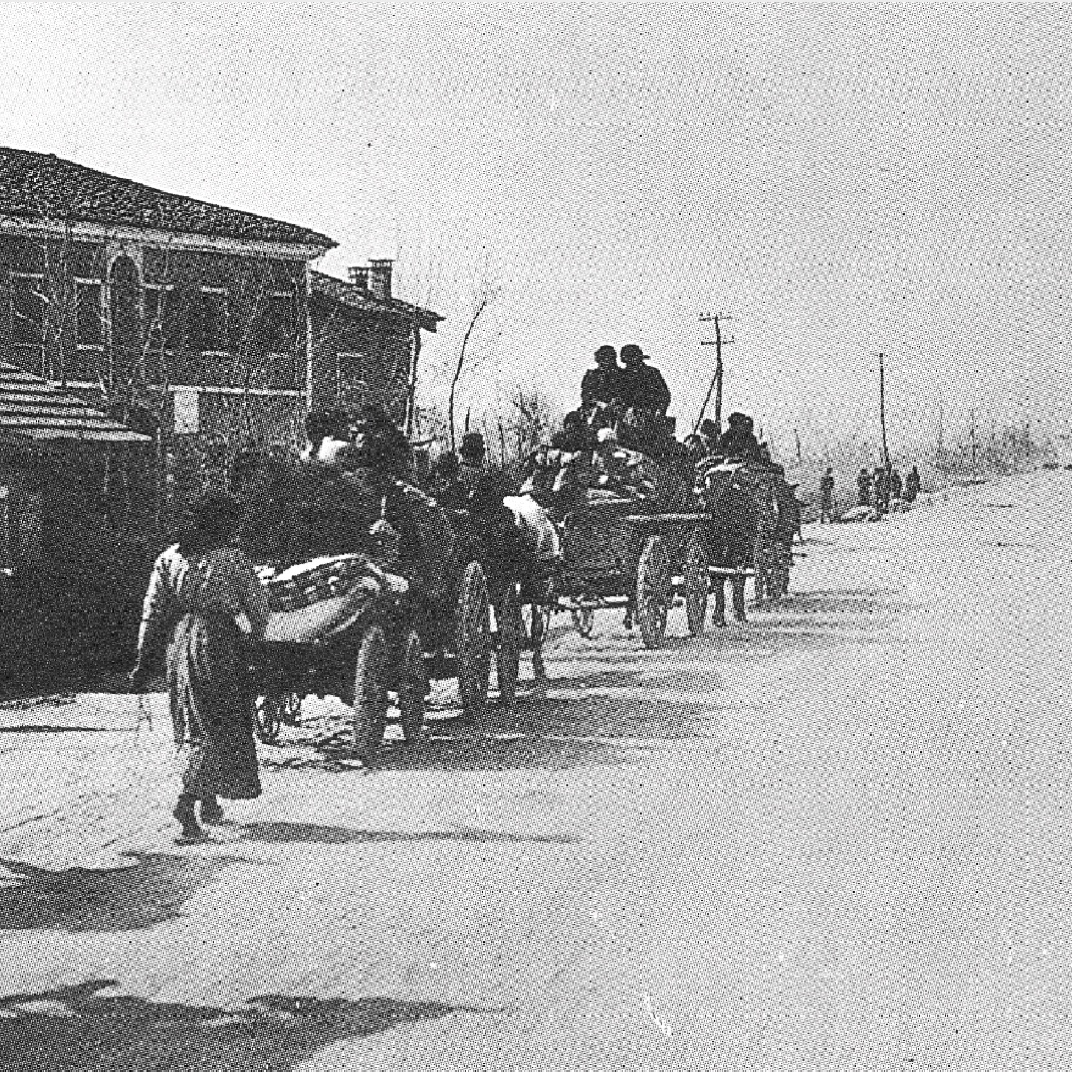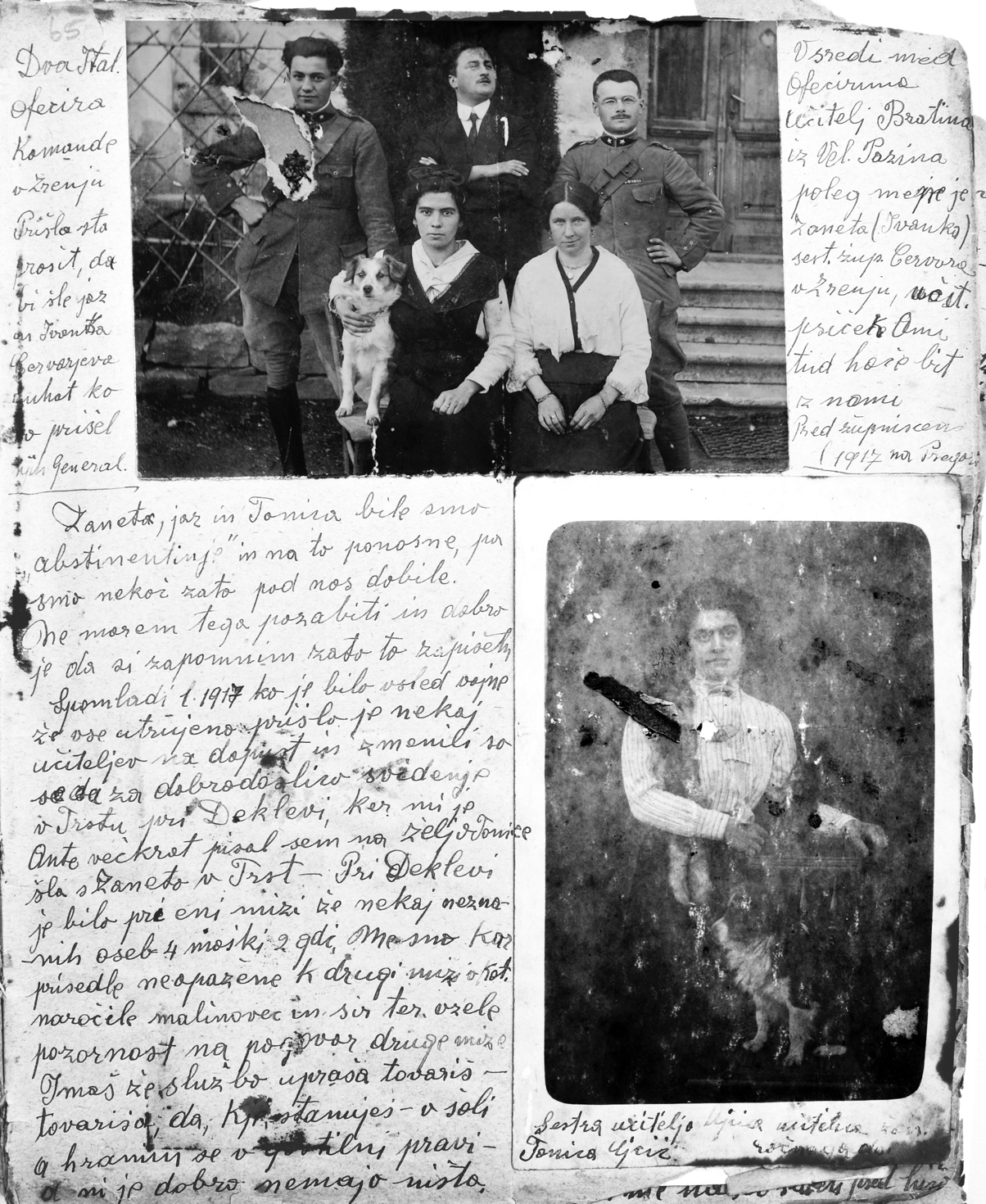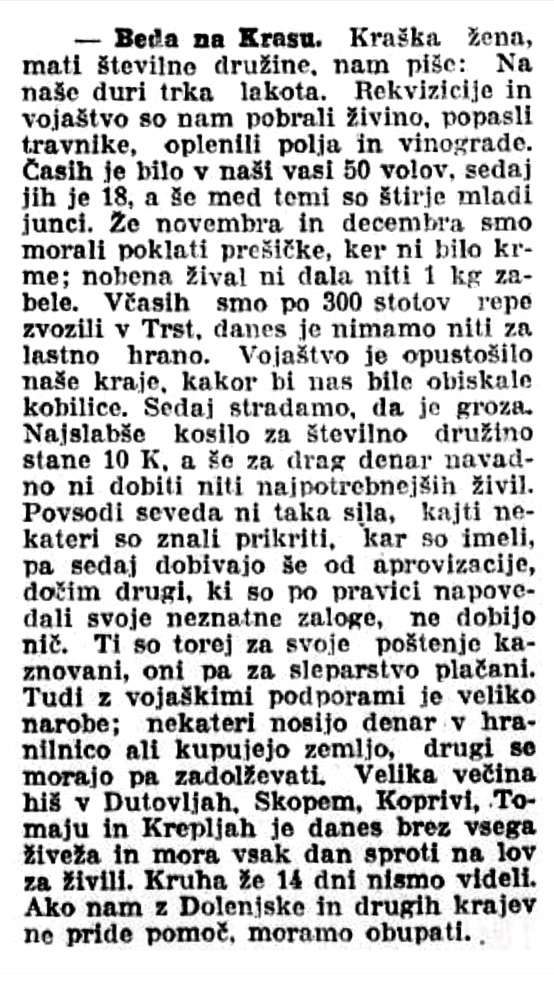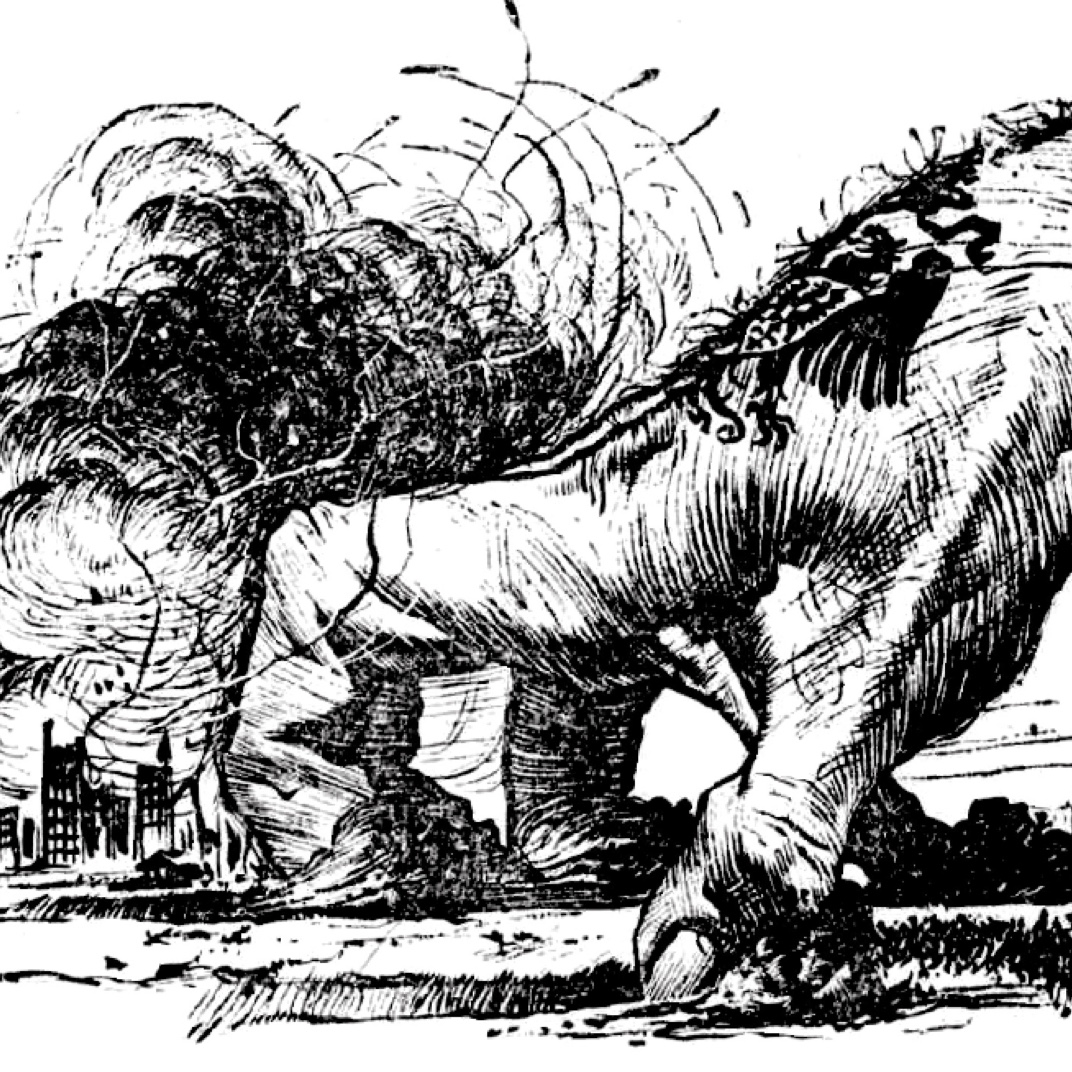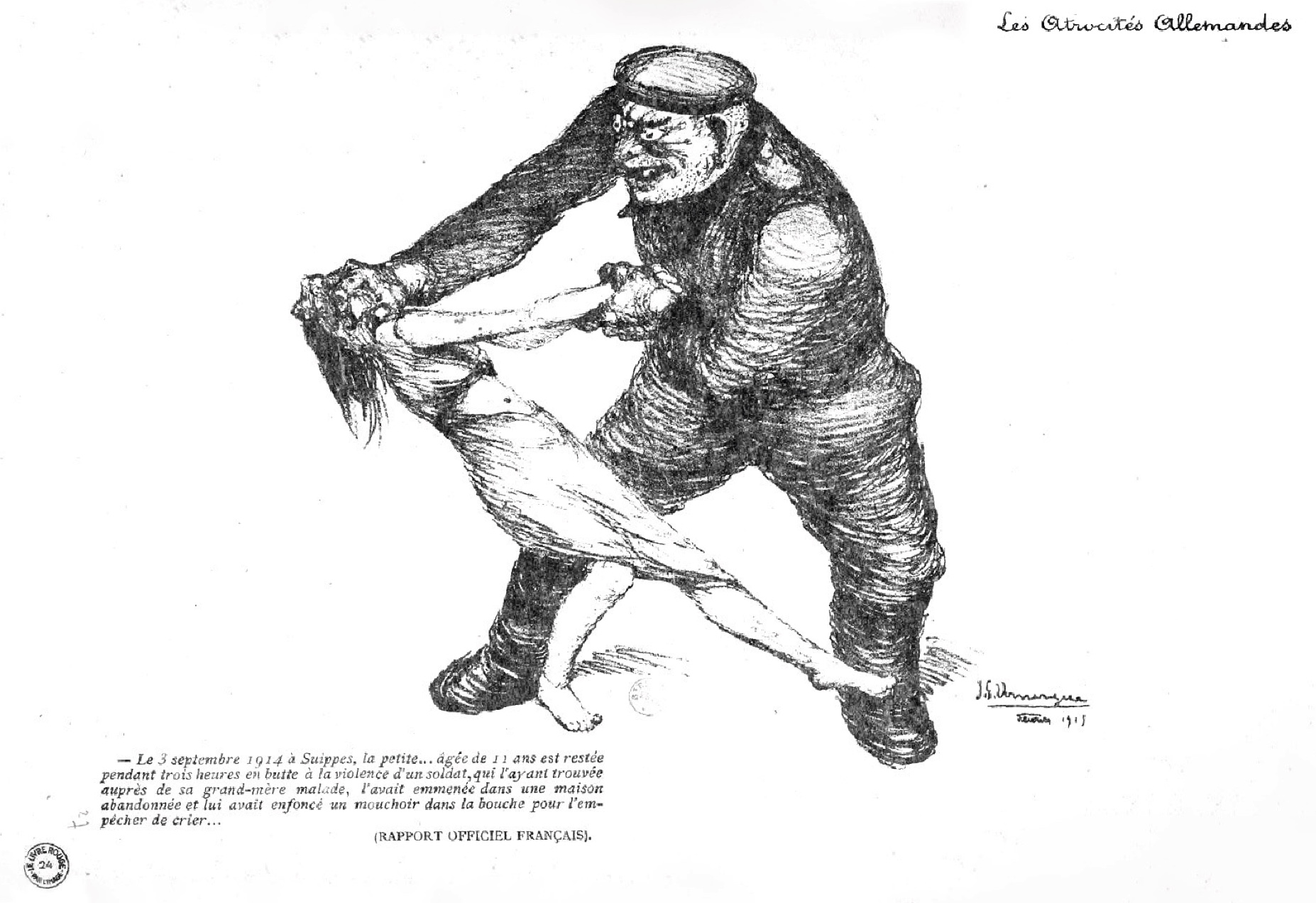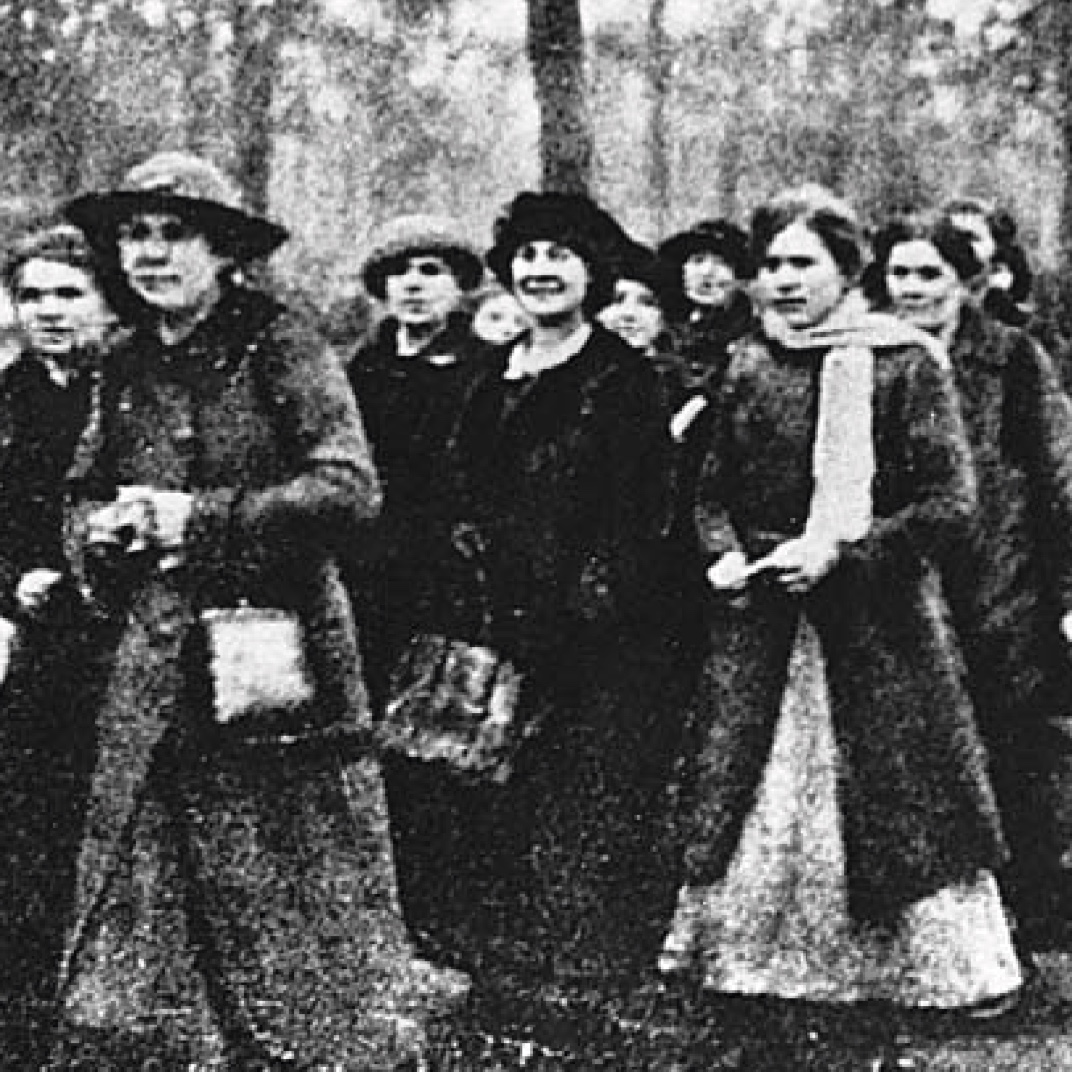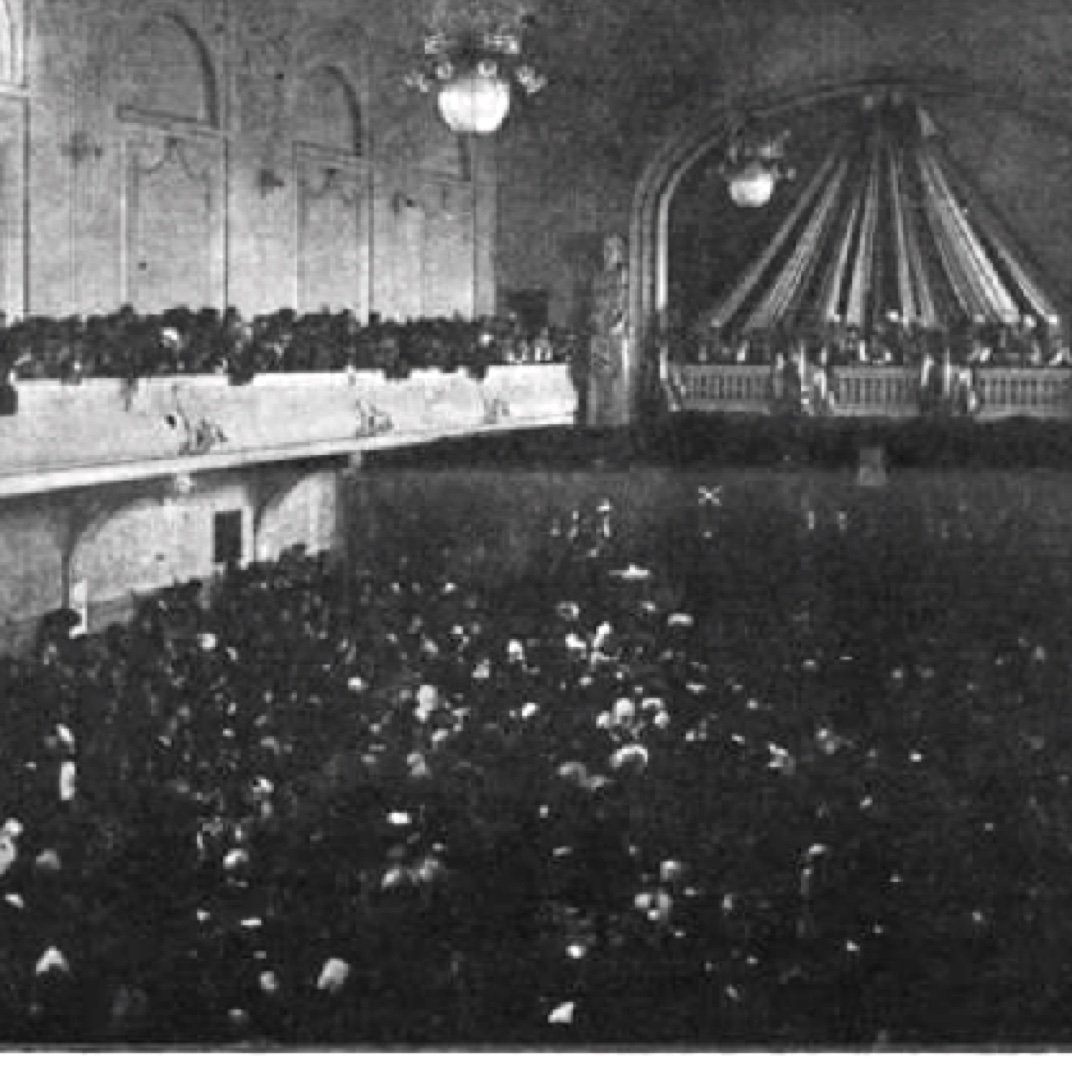Women in the Streets. For Bread and the Nation
The war began at the same time for men and women alike, however, its end unfolded in a variety of ways and periods. For women from the Soča Valley, who at the onset of the conflict between Italy and Austria-Hungary retreated to the nearby Littoral and Carniolan hinterland, the war came to an end after the breakthrough at Kobarid. Provided that their homes had not been destroyed by the enemy. The relocation of the conflict to the Po Valley gave hope of returning home to other women refugees, who where staying in Styrian and other Austrian camps. It was, in fact, lack of resources for the material rebuilding that hindered the return of the civilian population to their hometowns, with chaotic conditions, which continued up to the end of 1918, playing a crucial role. Meanwhile, new swaths of the female population were pushed into danger and uncertainty by the destruction brought about by the penetrating troops, mostly Germans, in the Friulian plain and Po Valley. During the campaign to the Piave river temporary winners let off steam by committing robberies and rapes.
Famine, shortage, frequently also despair due to their inability to stay in touch with their husbands, sons, and fiancés on the front spread dissatisfaction among the female population of all warring countries. The number of women who as widows, bereaved mothers, fiancés, and orphans experienced the loss of their loved ones was increasing. Many of them dealt with their loved ones’ mental and physical ruin that was brought about by the war. War tall became so high and intolerable in the final year of the war that women’s patriotism started to turn into resistance. Their forbearance capitulated to the incompetence of food provision services and to the black market. Particularly women at society’s bottom and factory workers, in some places also middleclass women, in their new occupational identities, were at the forefront of strikes and the pacifist movement. Women of all strata and nationalities began to demand determinately that the war be ended and soldiers return home. They put a political price tag to their former patriotic efforts. In many places throughout the world they demanded the general right to vote for women and better workplace rights. As members of a mass declarative movement in Slovene lands they fought for the right to a new homeland.
Economy and Employment Policy
The fourth year of the global conflict was marked by the war economy and women’s involvement in it. Upon USA entering into the war, appeals were made for American women to participate in the “home front”. Russia’s exit from the war, meanwhile, reduced the share of the Russian female workforce in the war-related industry and in the provision. The number of employed women underwent an increase in all warring countries; however, the extent of each respective increase varied in different industries and according to individual regions’ characteristics.
After the breakthrough at Kobarid Slovene lands were no longer a part of the immediate war zone, which had an impact on the Slovene labour market and broader employment policy. The Paper mill Vevče and the Tobacco factory Ljubljana stared to employ predominately women only after the beginning of 1918. The war was still keeping a firm grip on the economy. Employment was sought mostly through non-formal channels. Poor harvests and difficulties in the import of foodstuffs and raw material increased the need for women working in agriculture.
Fashion
World War I brought about radical changes in fashion as well. Frugality called for adjustment of forms and materials: skirts were becoming shorter, narrow waists and S-curve silhouettes were disappearing. New requirements and, consequently, new materials introduced new fashions. Paris and Vienna, the pre-war fashion capitals, were joined by Italy on the map of the European fashion.
Changes in the labour market leading up to women being employed in many male-dominated occupations was followed by a revolution in work wear. New uniforms were tailored to meet the requirements of women working as nurses, factory workers, tram drivers, and railway ticket inspectors. Practicality, usability, and frugality were of key importance in their production.
By means of clothes women expressed their patriotism and loyalty to the warring nation. The colours or patterns of sashes, tucks, patches, and ties, confirmed women’s affiliations and provided insight into their activities, particularly those of young girls.
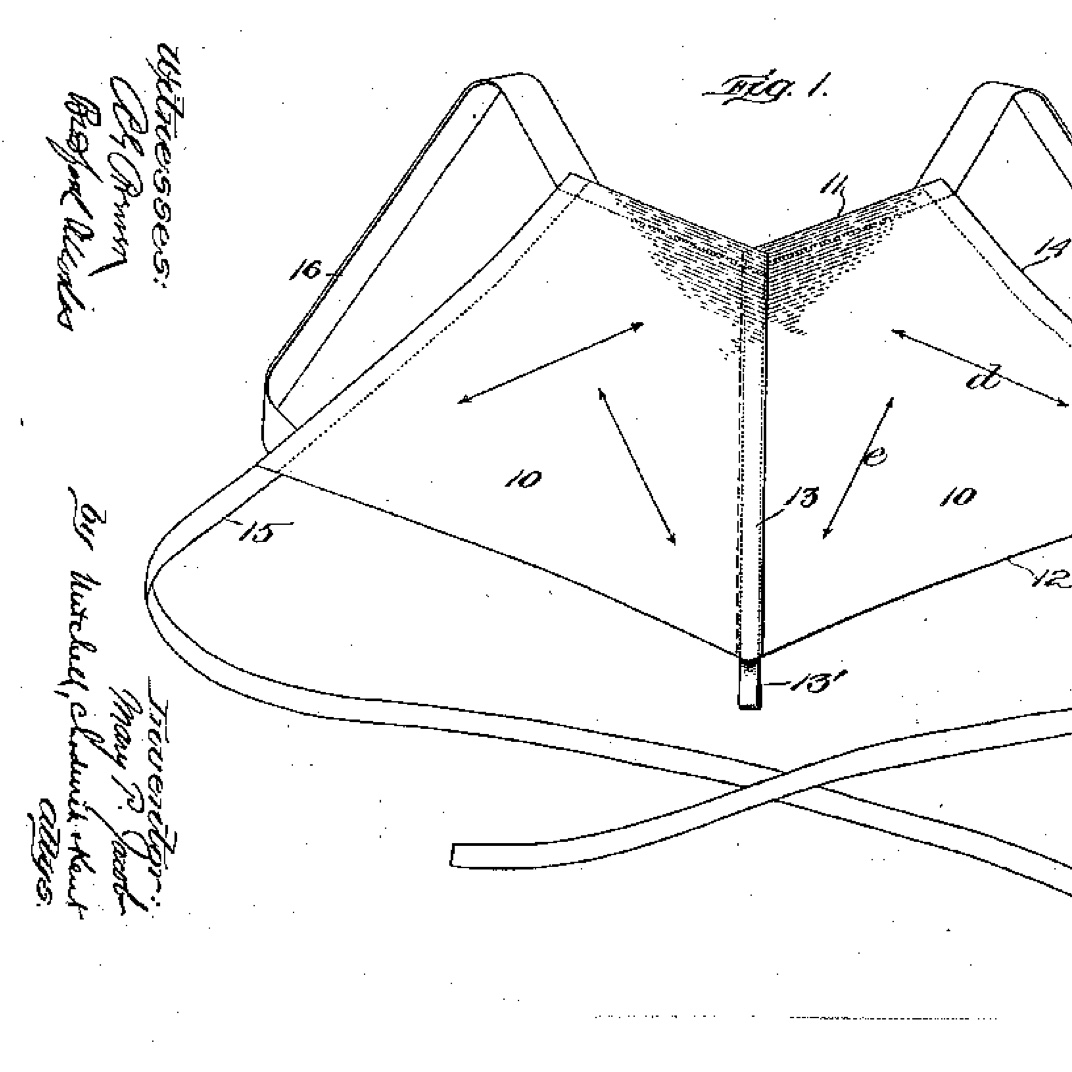
Mary Phelps Jacob (1891–1970) je leta 1914 z vrvico povezala svilena robčka in ustvarila prvi modrček. Patent je prodala podjetju Warner Brothers. Ameriška vlada je med prvo svetovno vojno prosila ženske, naj ne kupujejo korzetov, ker je za orožje potrebovala vedno več kovine. Tako je modrčku odprla pot na trg.
Vir: Wikipedia (patent).
New Waves of Refugees
The final three offensives in the Soča Valley in 1917 were accompanied by refugee waves. The last two were particularly important. Italian troops’ eleventh offensive caused the population to flee from the Tolmin and Banjšice plateau, seeking refuge immediately behind the front. The largest mass of refugees in the South-Western front up to then was forced to leave due to Austro-German twelfth offensive. Some 500,000 civilians, mostly women, children, and old men, were fleeing from Friuli and Veneto along with the Italian army.
From November 1917 onwards, when the state of emergency was ended in the Soča Valley, the first expelled civilians started to return. The renovation of destroyed buildings and roads was still difficult. The lives of those who returned were threatened by unexploded projectiles. Owing to poor living conditions and the general ongoing situation in the area of the former battlefield, the Austrian authorities hindered the return of refugees up to the end of the war.
Vir: Vpis v župnijski kroniki Krope, 8. 10. 1917. (Archivio della Curia Arcivescovile di Gorizia)
Strašna je bila tista noč za ljudi: ceste zaprte od vojaških transportov in miniranja iz Banjšic, polno stokajočih ranjencev, granate žvižgale, otroci jokali, večina nosila po večkrat tisto noč najnujnejše na Lazno proti Gor. Trebuši. Vboge matere z otroci! Konja nikoder, voza nobenega na razpolago.
Aftermath of the War and the Civil Population
In 1917 Austria’s wartime economic measures subordinated agriculture to the needs of the war. Faced with a general shortage, the number of women and young people committing criminal offences soared to the extent that the emperor was forced to announce a general amnesty for petty thefts. The authorities’ special afternoon programmes aimed to prevent juvenile delinquency and attempted to keep children off the streets. Soldiers’ joy upon their return was immense. Just as their departure changed the dynamics of life in the private and public spheres, their return was a watershed as well. Following demobilisation, many soldiers were also left without employment. Many of them were wounded or mentally ill. Consequently, familial relations took a turn for the worse, and so did families’ precarious financial situations. Poor living conditions resulted in an increased death rate. The dysentery and the Spanish flu epidemics, which raged in the final two years of the war and after it, claimed many lives among all strata of the population.
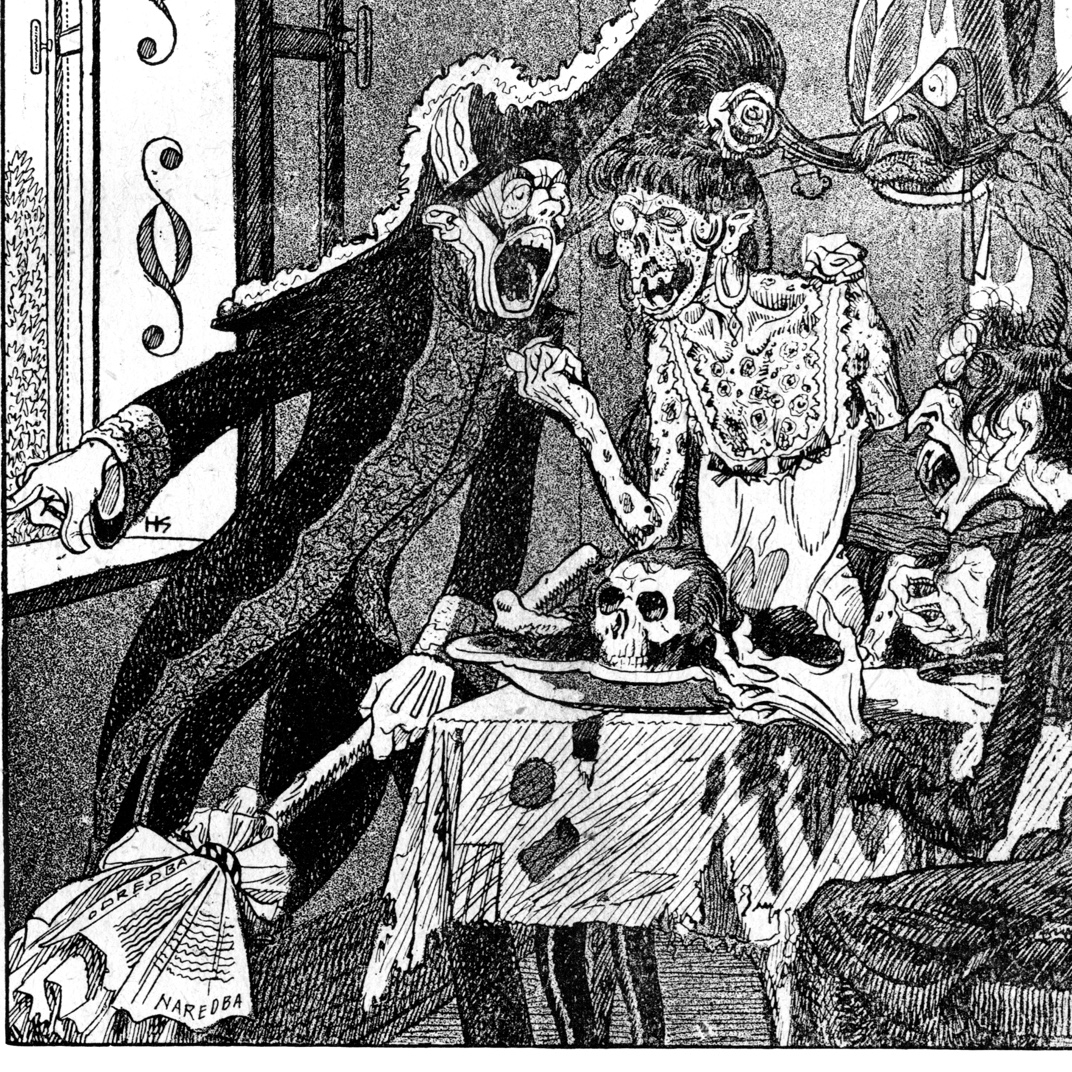
Sifilis in jetika sta bila razširjena že pred vojno. Z njo pa sta se zaradi nizke odpornosti in promiskuitete še bolj razmahnila. Španska gripa je prerasla v epidemijo ob koncu vojne in po njej. Na Kranjskem so v šolah beležili okuženost v razponu od 16 do 75 odstotkov vseh šolajočih se.
Vir: Hinko Smrekar, »Jetika, Sifilis, Španska: 'Najprej nam in našim sestram odprete vrata in nas bogato gostite, nato nas pa skozi okno vun gonite! S to metlo nas pa ne užugate!!'«, Kurent, 16. 10. 1918.
O žalosti žensk, mater, žen, zaročenk padlih vojakov so pisali slovenski literati.
Vir: Dom in svet, 1–2/1918. (www.dlib.si)
Žena padlega vojaka.
Rodila sem, nesrečna. In nikjer očeta.
Strašnó je. Rada bi bilà zaničevana.
Vsi tihi so. Pogledi v me, kot da sem sveta.
Iz hiše rodne rada bi bila izgnana.
Ne radi tebe, mali.
Ne radi vas, kateri ste v daljavi pali,
med kterimi je tudi srce moje bilo.
Vi moji ste. Srce bolesti bi za vas nosilo.
O, radi tebe, svet! prokletstvo nate in gorjé!
Razdrta je prisega sveta.
Me rodimo kot nezákonske žené.
Otroci naši nimajo očeta.
Ah, bolje umreti! Ko zvečer žené
z možmi, z otroki se hladijo, poka mi srce.
In če vprašajo otroci po očetu kdaj,
kaj odgovorim jim mati naj?
France Bevk
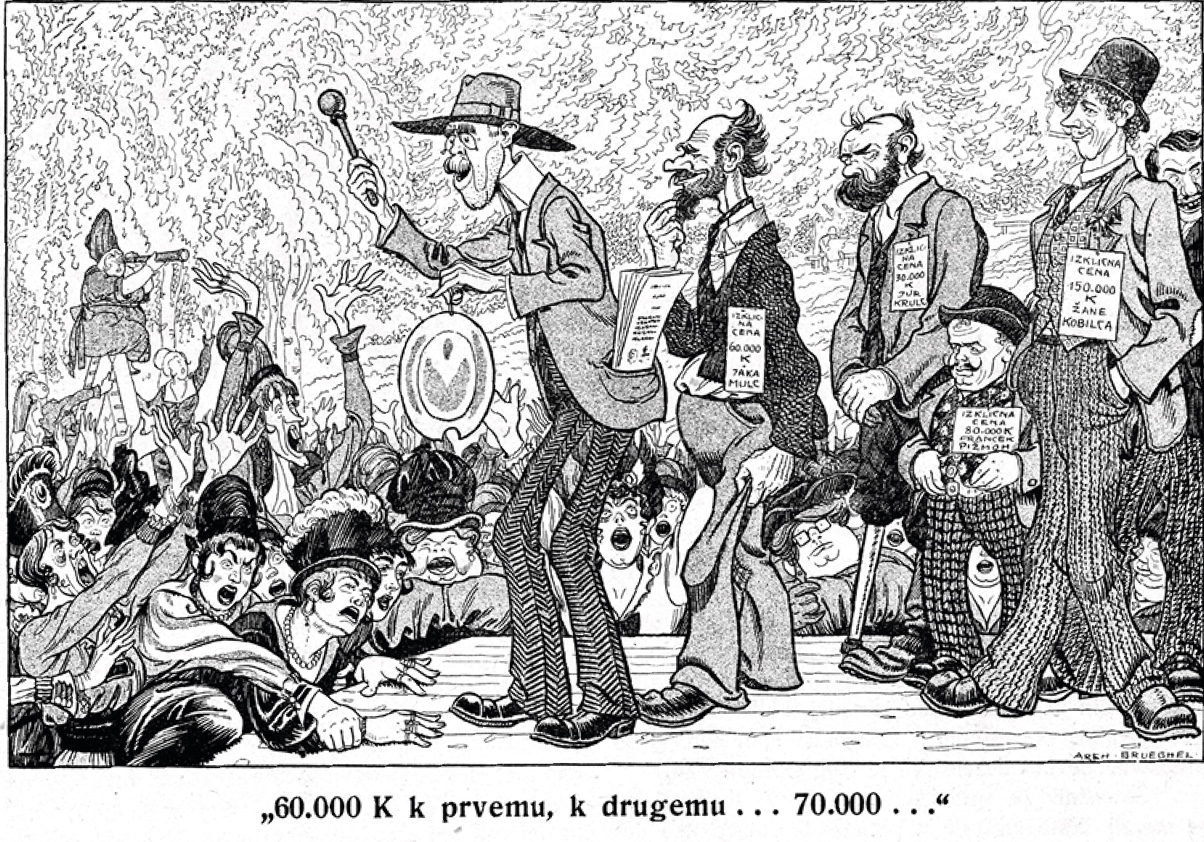
Na frontnih linijah je kosila smrt, zato se je precej zmanjšalo število mož in fantov, ki so bili primerne starosti, zdravja in gmotnega stanja za ženitev.
Vir: Hinko Smrekar, »Prostovoljna dražba fantov v svrho ženitve«, Kurent, 1. 11. 1918.
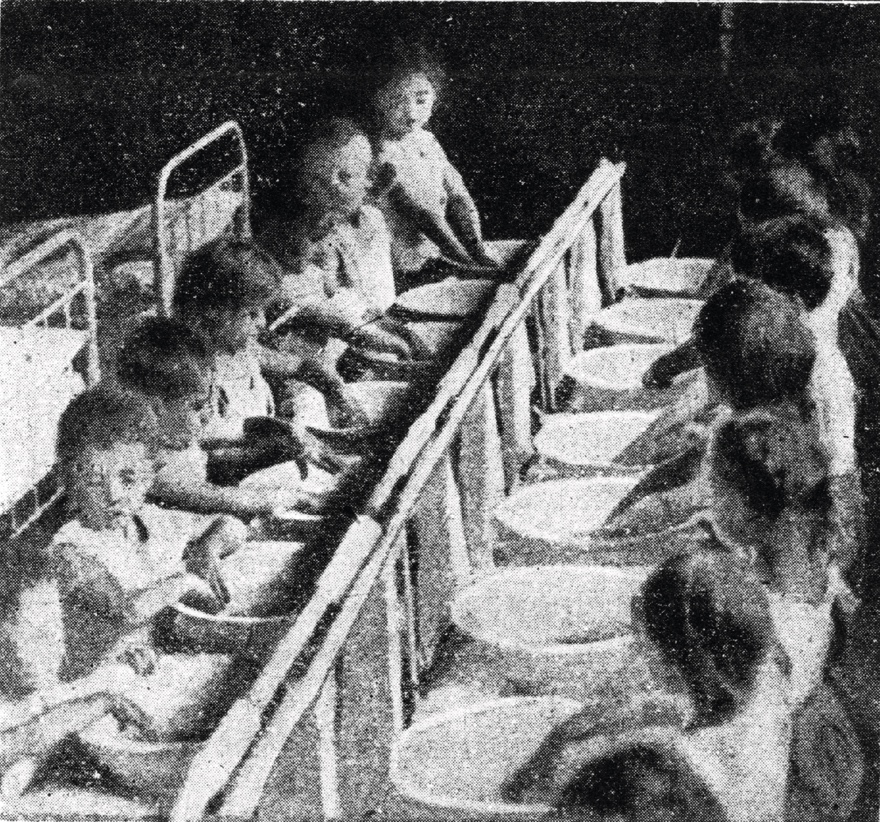
Zaradi vedno večjega števila vojnih sirot je naraščalo število vojnih sirotišnic. Te so bile v vseh večjih mestih zaledja.
Vir: »Sirotke v vojni sirotišnici pri umivanju«, Ilustrirani glasnik, 15. 5. 1918.
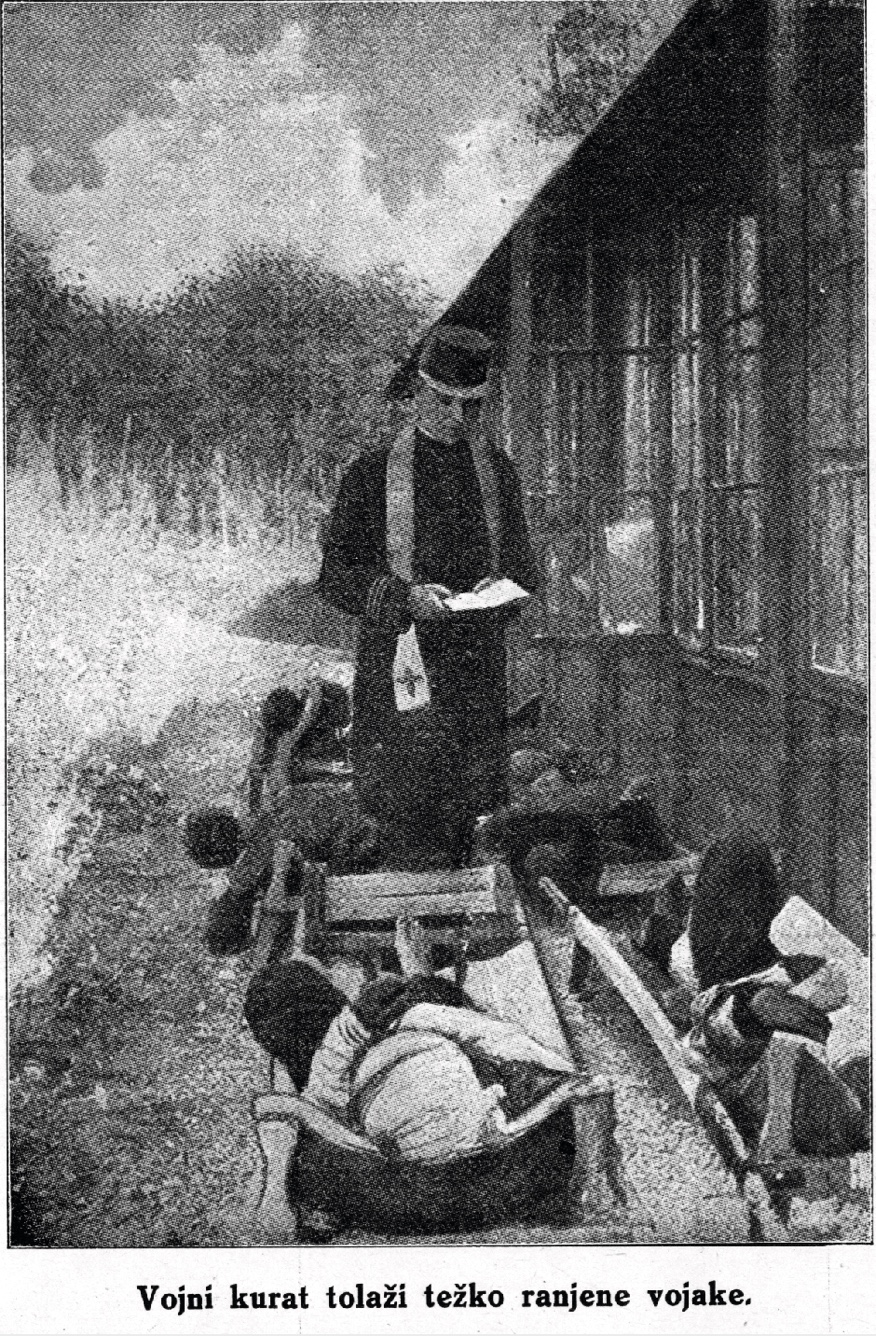
Po podatkih popisa Ministrstva za socialno politiko Kraljevine SHS je bilo leta 1921 na Slovenskem 11.467 invalidov in 49.182 vojnih vdov z nepreskrbljenimi družinskimi člani. Kraljevina je ves čas sprejemala predpise o njihovi preskrbi, a so bili zneski zelo nizki. Popis leta 1938 je pokazal, da 67 odstotkov od okoli pet tisoč še živečih invalidov ni imelo lastnega stanovanja.
Vir: »Ranjenci z vojnim kuratom«, Ilustrirani glasnik, 27. 12. 1917.
Sexual Violence
During World War I, women were subjected to the threat of sexual violence on a daily basis, particularly in the occupied territories of Belgium, Serbia, North-Eastern France, Armenia, Austria-Hungary, and Italy. The Austro-German breakthrough at Kobarid and the arrival of German and Austrian troops in the Friulian plain and the Po Valley were accompanied by reports of mass rapes. Occasionally, these reports were fabricated by Italian propaganda, but often they indicated a harsh reality that women, powerless in the face of soldiers, were confronted with.
Women were subjected to sexual abuse behind closed doors, but also in public, in front of humiliated and disarmed soldiers of the losing army. Some women endured a series of rapes. Many of them were indelibly marked by the trauma, but also with the consequences of sexually transmitted diseases or possible unwanted pregnancies.
Sexual violence was not restricted merely to the occupied territories. Rapists could be found also within the ranks of the domestic army. Slovene women behind the Isonzo Front were, for instance, threatened by Austro-Hungarian soldiers. Even though the Austrian legislature envisaged severe penalties for committing a rape, rapists were rarely prosecuted.
Italijanske oblasti so takoj po koncu vojne zbrale številna pričevanja o posilstvih, ki so se zgodila po bitki pri Kobaridu.
Vir: Andrea Falcomer, Gli »orfani dei vivi«. Madri e figli della guerra e della violenza nell'attività dell'Istituto San Filippo Neri (1918–1947), 2009.
Leta 1917 se je tu v Casetanu zadrževal pehotni bataljon. Vojak, ki ga nisem poznala, me je posilil in sem zanosila.
Duhovniki so v spomenicah, ki so jih pošiljali ljubljanski škofiji, pisali o spolnem nasilju nad ženskami v kranjskem zaledju.
Vir: Nadškofijski arhiv Ljubljana.
Odkar je nastanjeno v kraju vojaštvo, gre prej na slabše. Mnogi vojaki so nasilni. Bilo je več deklet napadenih.
Mekinje, 3. 5. 1916.
Protests for “Bread and the Nation”
In the final two years of the war, the increasing shortage led women to the streets. Their protests had a profound impact on the outcome of the war in many European cities. On International Women’s Day, 8 March 1917, Russian women took to the streets of St. Petersburg. Their mass demonstration for “bread and peace” was the spark that later on lit the fire of the February and October Revolutions and led to the downfall of the Russian tzar. Revolutionary developments in Russia gave rise to workers’ organizations throughout Europe. A bigger and better organized tidal wave of protests that also reached Slovene cities was triggered. In late April 1918 high-profile demonstrations in Ljubljana were accompanied by riots and plundering and ended with mass arrests of women. The defendants were later on released without being convicted, mostly due to the end of the war and arrival of new authorities.
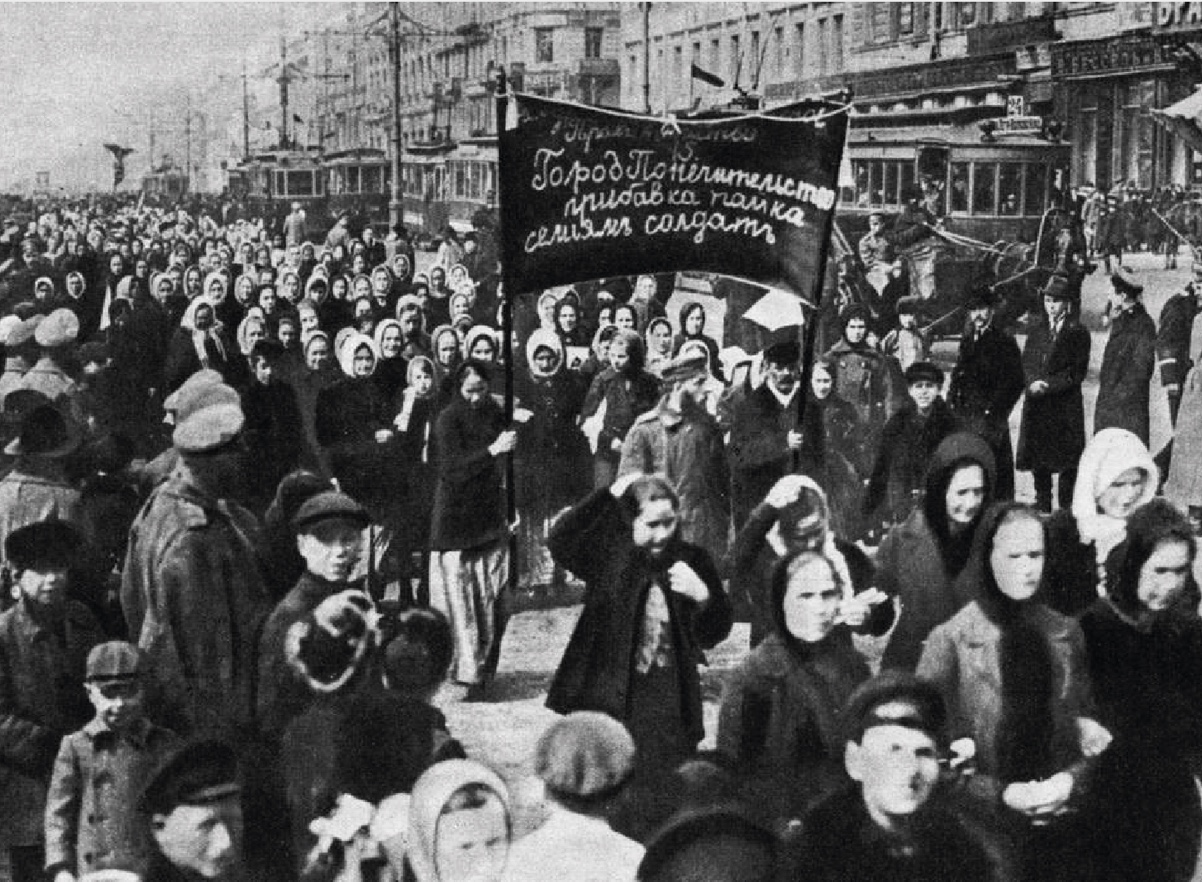
Ženske demonstracije za »kruh in mir«, 8. 3. 1917, Petrograd, Rusija.
Vir: Wikipedia.

Aleksandra Mihajlovna Kollontaj (1872–1952) je bila pomembna komunistična revolucionarka. Nove sovjetske oblasti so podprle večjo vlogo žensk v politiki. Sovjetska zveza se je vsaj na deklarativni ravni zavezala enakopravnosti žensk.
Vir: Wikipedia.
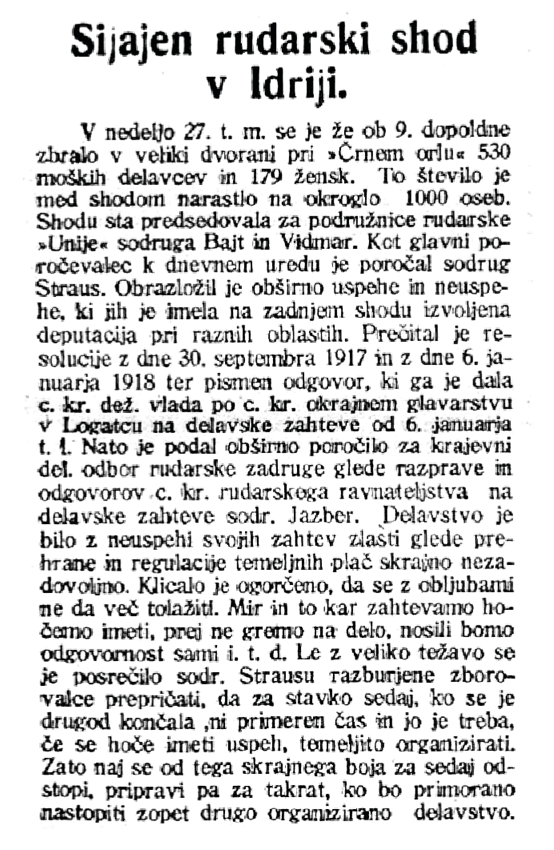
Shodi za mir so konec leta 1917 in na začetku leta 1918 potekali po številnih slovenskih delavskih središčih.
Vir: Naprej!, 4. 2. 1918. (www.dlib.si)
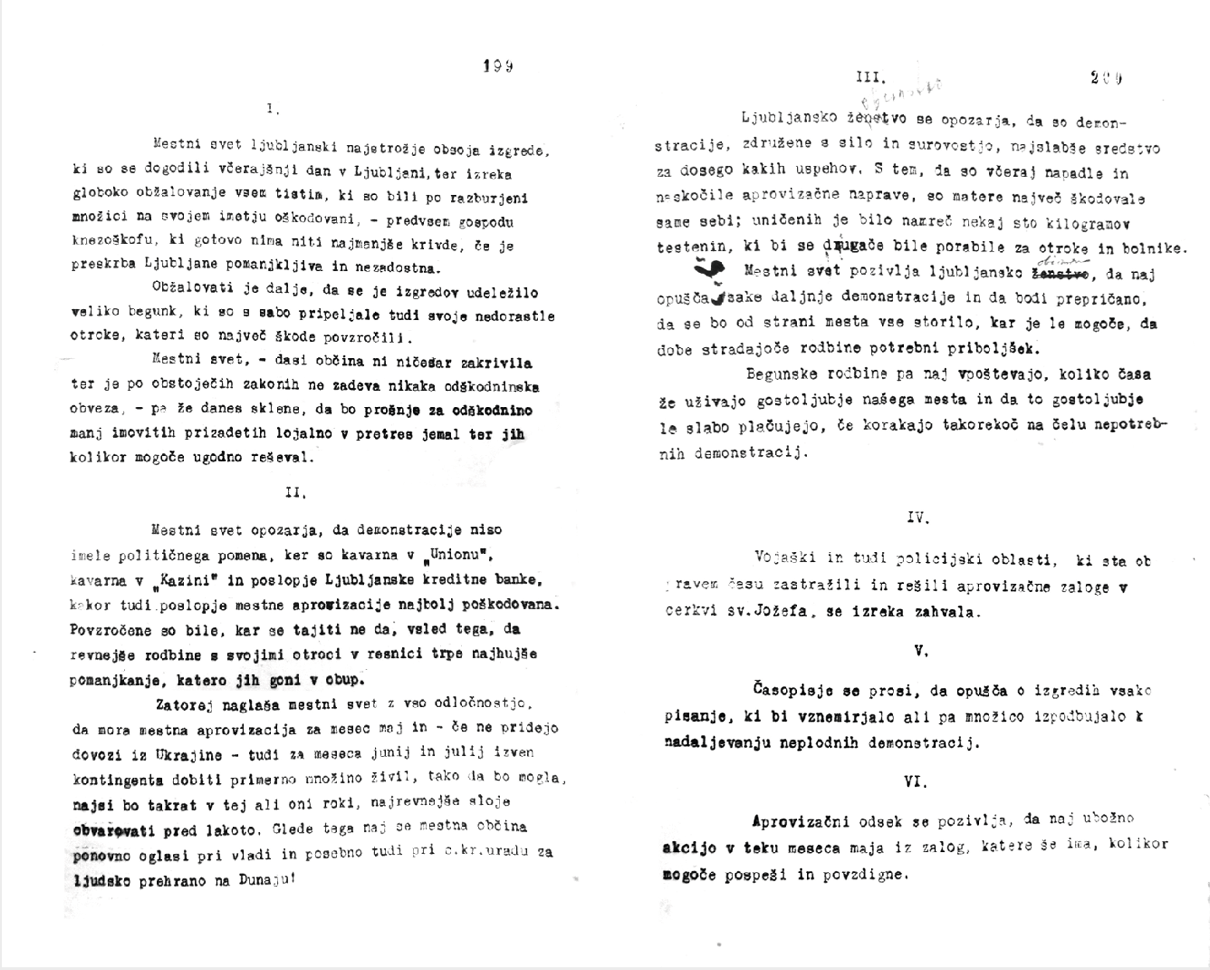
Ljubljanski mestni svet graja begunke in matere, ki so se 24. 4. 1917 udeležile demonstracij.
Vir: Zgodovinski arhiv Ljubljana.
For the Nation
Women’s political activities were not banned during the war; however, many societies were discontinued. In the final two years of the war, an increasing general discontent, the anti-government atmosphere and hope for peace turned into a political movement that also included women. Before the war only individual women expressed their political convictions, with the emergence of the declarative movement, on the other hand, the number of politically active women grew. Women were emerging as important political players on the Slovene political scene. They were not mere supporters of the policy that was constructed by men, but they themselves became organizers of big rallies, demanding the unification of the Slovene territory in a new state and expressing hope for a better future. They shyly voiced their demand for the introduction of women’s suffrage.
Med množico v dvorani Union je bila tudi Angela Vode.
Vir: Angela Vode,
Spomin in pozaba, 2000.
»… v glavi mi je šumelo od navdušenja:
da zmore tudi naš mali narod kaj takega,
da se upira oblasti …«
Slovenke v Wilsonovih pozivih niso prepoznale le zahteve po večji enakopravnosti med narodi, temveč tudi med spoloma.
Vir: Zgodovinski arhiv Ljubljana.
»… demokratično enakopravnost in samoodločbo, ne le za vse zatirane narode, nego tudi za vse zatirane stanove in za zatirani ženski spol.«
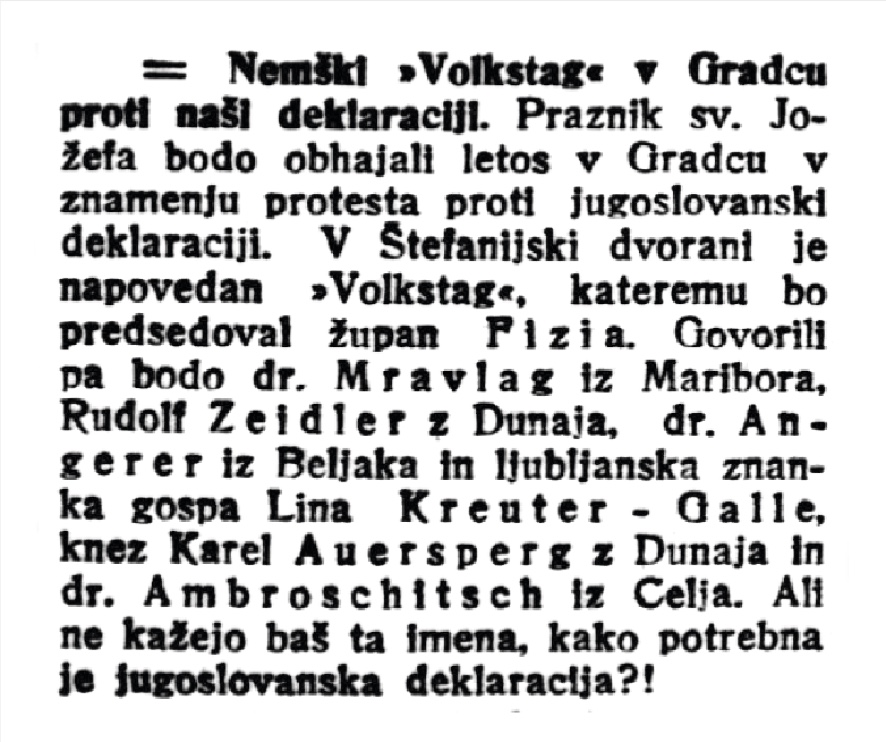
Majniška deklaracija je imela tudi nasprotnike in nasprotnice. Med njimi je bila ljubljanska Nemka Lina Kreuter Galle, ki je proti njej organizirala proteste v Gradcu.
Vir: Slovenski narod, 15. 3. 1918. (www.dlib.si)

Slovenci in Slovenke so podpirali mirovna prizadevanja ameriškega predsednika Wilsona. Ženska društva so svoje zahteve poslale tudi Wilsonovi hčerki Margaret Woodrow Wilson.
Vir: Šolski muzej.
1918 and the Post-War Reality

The final years of the conflict saw a growth of war-weariness, which provided fertile ground for extensive unrest. The end of the war brought the decay of centuries-old empires, and new state formations came into being. Ethnic conflicts were renewed and social conditions strained in the new political and economic circumstances. The period of the post-war instability continued well into the 1920s. The aftermath of the total war was noticeable on all levels of the post-war society.
Regardless of gender, the civil population was faced with consequences of a general destruction, severe economic and demographical crises, diseases, and undernourishment. Reduced to ashes, the Habsburg Monarchy was replaced by newly formed states that did not grant citizenship to a good many. They strove to form nationally homogeneous territories, subjecting many members of national minorities to pressure and even violence. Many of them emigrated. Some of them remained in the areas in which they had sought refuge during the war. They included many widows from the Littoral, particularly if they had been widowed during the war.
